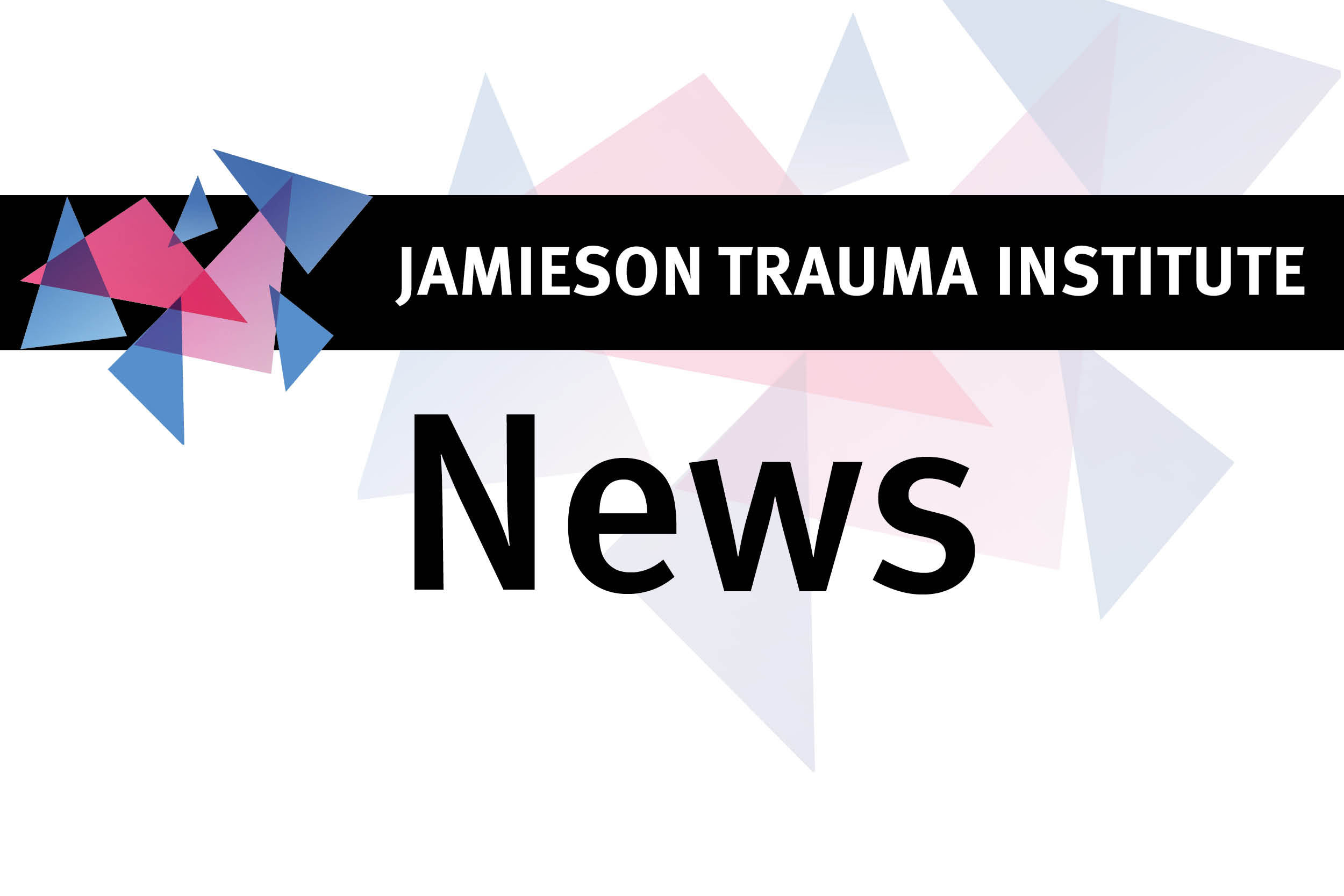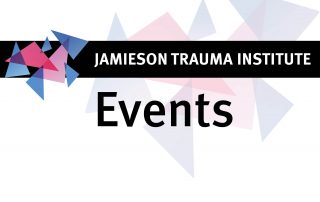Our Projects
Chief Investigators: Susanna Cramb, Clinton Gibbs, Kirsten Vallmuur, Adam Rolley, Alan Woodley, Rex Parsons, Angela Watson, Christopher Hayden, Jacelle Warren, Gary Mitchell
Does where you live impact your access to health care following injury? Our team has developed a tool to help answer this question and have named it iTRAQI (injury Treatment & Rehabilitation Accessibility Queensland Index).
We know that Queensland is a large State, with some people living in rural and remote areas. These large distances make designing healthcare systems challenging, with our system needing ambulances, helicopters, and planes to make sure injured people can access the right care quickly. Until now, generic access/remoteness tools have been used to understand access challenges, however, these are often not specific enough for injured people. For this reason, iTRAQI is an injury-specific tool. We used the tool firstly for people with traumatic brain injury and showed how long it would take to transport a person in an emergency to the most appropriate hospital (under ideal but realistic conditions).
The tool was designed by our research group led by the Jamieson Trauma institute, Queensland University of Technology and Retrieval Services Queensland. You can explore how iTRAQI works for Queenslanders with serious traumatic brain injuries here: https://access.healthequity.link/
In the future, the tool can be modified and specified for other major injury types also, and has significant potential to support health systems decisions, particularly when specialised hospital treatment is far from home. Using decision-making tools created specifically for serious injury can save lives, save costs by making efficient choices, and improve patient outcomes by timely access to the right care.
This research is supported by Jamieson Trauma Institute, the ARC Centre of Excellence for Mathematical & Statistical Frontiers, the QUT Centre for Data Science and the Emergency Medicine Foundation.
Chief Investigators: Panos Barlas, Esther Jacobson, Michael Schuetz, Victoria McCreanor, Jerry van de Pol, Richard Hanly, Venerina Johnston, Christopher Smith, Mark Cruickshank, Peter Slattery, Melanie Plinsinga, Silvia Manzanero, Nicole Andrews
Despite ankle fractures being one of the most common lower limb fractures, rehabilitation protocols for this common injury are varied and not standardised. One key element of the eventual outcome of the injury is the timing of weight bearing on the injured foot. However, weight bearing is difficult to quantify at the early stages of the injury and clinicians are keen to explore means by which weight bearing can be monitored and guide the rehabilitation protocol.
With this clinical problem in mind the Jamieson Trauma Institute in collaboration with clinicians from Orthopaedics, Physiotherapy and Prosthetics and Orthotics departments at RBWH is leading the way in researching solutions to monitoring weight bearing in patients who have had an operation to repair an ankle fracture via the use of intelligent technology in the shape of sensors embedded in the stabilising cast and eventually the shoe of the patient.
The research involves several stages including review and assessment of available technology and rehabilitation protocols, validation of technology for use in this context, feasibility of use by patients during their rehabilitation, and a clinical trial to determine which weight-bearing strategies result in the best recovery for patients.
It is envisaged that results from this effort will allow better understanding of weight bearing characteristics throughout the course of healing of ankle fractures, and subsequently, better rehabilitation protocols which can be delivered even remotely with the help of the technological solutions tested.
Chief Investigators: Michael Schuetz, Andrew Foster, Paul Chapman, Bonnie Woods, Kevin Tetsworth, Andrej Trampuz, Beat Schmutz
Patients with orthopaedic implant or trauma related infection are a complex population. Between 2006 and 2017, MNHHS treated more than 2,300 patients with orthopaedic-device related infections, costing over $70 million. Many live out of the Metro North catchment with no local access to the expertise required for their complex needs.
mDRIFT was set up in 2020 by the Jamieson Trauma Institute at the Royal Brisbane and Women’s Hospital to help combat this difficult clinical complication through effective coordination of patient care. The team consists of orthopaedic surgeons, plastics/reconstructive surgeons, infectious disease physicians, microbiology, nursing, allied health and pharmacy. This initiative, the first to provide this service in Australia, has delivered improved patient outcomes and cost-effectiveness.
The research program around mDRIFT addresses several aspects including clinical evaluation, patient outcomes, health economics and innovation for remote patient follow-up.
Chief Investigators: Prof Kirsten Vallmuur, Dr Gary Mitchell, Mr Brett Droder, Dr Rob Eley, Dr Martin Wullschleger, Dr Luke Lawton, Dr Vinay Gangathimmaiah, Dr Graeme Maw
E-mobility, which refers to travel using electric personal mobility devices (PMDs, such as e-scooters, e-skateboards, etc), is a rapidly evolving and complex transport and safety issue globally. E-mobility through public and privately owned PMDs is increasing across Queensland, with an associated rise in injuries requiring treatment from health services.
Understanding the true extent of the safety issue and its related costs to health departments is only possible through accurate case identification and thorough information recording. Ensuring the health and safety of PMD users and those around them will require ongoing identification, monitoring and response to injury patterns.
The Jamieson Trauma Institute established a preliminary e-mobility related injury data collection when public shared e-scooter schemes first began in Brisbane in 2018. This involved identifying PMD related emergency department (ED) presentations and coding and analysing related medical record data. To date, this remains the most comprehensive source of information regarding e-mobility injuries in Queensland.
Recent funding from the RACQ and RBWH Foundation allows this research to expand with additional data collection methods and hospital sites, including Brisbane, Gold Coast and Townsville, to capture more detail regarding contributing factors to injury incidents, patient outcomes, and patient safety attitudes and behaviours.
This study is funded in equal parts by the Royal Automobile Club of Queensland (RACQ) and the Royal Brisbane and Women’s Hospital (RBWH) Foundation.
Chief Investigators: Dr Beat Schmutz, Mr Andreas Kouzelis, Dr Hollie Min, Dr Pierrick Bourgeat, A/Prof Jason Dowling, Prof Michael Schuetz, Dr Gary Mitchell, Dr Frances Williamson, A/Prof Craig Hacking, A/Prof Silvia Manzanero
Trauma patients presenting to an emergency department (ED) undergo initial standard X-ray imaging and, if required, subsequent computed tomography (CT) scanning. The obtained medical images are then utilised by clinicians for diagnosis and treatment planning.
This research aims to develop automated tools for clinical diagnosis and decision support, utilising artificial intelligence (AI). The AI tool will detect and map the bone fractures on the medical images, followed by classification into standard fracture types. Once integrated in the hospital system, such a screening tool will streamline and standardise patient management, reduce cost, rate of early misdiagnosis and patient radiation.
In the longer term, combining this AI-based tool with big data (mechanism of injury, diagnosis, treatment, patient outcomes) will enable the tool to generate patient-specific and evidence-based treatment recommendations for surgeons.
Chief Investigators: Kirsten Vallmuur, Susanna Cramb, Thom Saunders, Victoria McCreanor, Ben Kleverlaan, Michael Smallcombe, Sarah Quijano, Tim Gurnett
To date, worldwide, no detailed maps covering many types of injuries are available. The proof of concept Queensland Injury Atlas examines rates and costs of hospitalised injuries across statistical areas level 2 (up to 518 areas). There are 67 different injury types included, 5 age group categories (all/0-14/15-24/25-64/65+) and 3 sex categories (males/females/persons). This is the most detailed atlas in types of injuries and geographical resolution. There has been significant widespread interest from external stakeholders in trauma, transport and compensation areas leading to a new round of funding by the Motor Accident Insurance Commission to complete a beta phase of development to develop a more open access platform which will incorporate a broader range of visualisation features and data sources (including geospatial coordinates of injury/crash incidents).
Chief Investigators: Michael Schuetz, Michelle Moss, Matthew Ames, Luen Pearce, Mark Connick, Kerrie Mengersen, Martin O’Flaherty, Sean Tweedy, John Cairney, Kelsey Chapman, Amy Anderson, Rebecca Cason, Stephen Coulter
The EMPOWER project is a partnership between JTI and Queenslanders with Disability Network (QDN), funded by the Queensland Government. EMPOWER will enhance the understanding and collection of data about participation of Queenslanders with disability in sport and recreation across the State.
Key stakeholders undertaking and championing the EMPOWER research with JTI and QDN are the Queensland University of Technology (QUT) and the Co-Design Team led by people with disability and lived experience. There are many other stakeholders contributing to and involved with the EMPOWER project including Griffith University, the University of Queensland (UQ), Sporting Wheelies and more.
EMPOWER through JTI, QDN and its wider collaborative network aims to produce evidence-based outcomes such as a long-term data collection framework for more inclusive and accessible sports and recreation participation for Queenslanders with disability. EMPOWER is working closely with the Department of Sport, Racing, Olympic and Paralympic Games, Queensland Government to develop a strong foundation for vibrant, inclusive communities and significantly improve overall community wellbeing for all Queenslanders with disabilities towards 2032 and beyond.
Chief Investigators: Dr. Alejandro Melendez-Calderon, Dr. Camila Shirota, Ms. Haylee Kajewski, Mr. Oliver Mason, Ms. Tamsin Mahoney, Ms. Jacquelin Donovan (née Mitchell), Ms. Catherine Cave, Ms. Leanne Passier, Dr. Vincent Moug, Dr. Clifford Afoakwah, Ms Champika Patullo, Mr. Tim Cudmore, Prof. Sandy Brauer
Have you ever wondered how we could best leverage rehabilitation technology to support our therapy services and improve patient’s recovery outcomes? Imagine a model of care where rehabilitation engineers work hand-in-hand with physiotherapy and occupational therapy teams, collaboratively delivering therapy and shaping the use of technologies in everyday clinical practice. Our team of investigators is excited to propose just that!
We are thrilled to announce that we have been awarded $970k from the Motor Accident Insurance Commission (MAIC) to trial a Rehabilitation Innovation and Technology Assessment (RITA) service. This innovative service will bridge the gap between rehabilitation engineers and therapists, and provide a hub for co-design and implementation of innovative rehabilitation concepts and technologies. By bringing professions together, we expect to unlock new possibilities for rehabilitation and make a meaningful difference in recovery outcomes.
Thanks to the MAIC Innovative Research Action Awards (MIRAA), we will trial RITA as an interprofessional service, and conduct an initial feasibility study at the Surgical Treatment and Rehabilitation Service (STARS, Metro North Health) and the Princess Alexandra Hospital (PAH, Metro South Health). Over the next 21 months, this service trial and feasibility study will focus on two key areas:
(1) investigating how, and to what extent, interprofessional teams can increase patients’ movement practice using technology; and
(2) surveying rehabilitation technology needs prior to hospital discharge, including co-designing prototype solutions for selected cases.
The RITA service is a collaborative effort between researchers and health practitioners from the Jamison Trauma Institute, RBWH, STARS, PAH, Queensland University of Technology, Griffith University, and the University of Queensland.
Stay tuned for updates on our progress and feel free to reach out if you want to get involved!
Contact: Dr Alejandro Melendez-Calderon, Principal Research Fellow, Jamieson Trauma Institute (alej.melendez@health.qld.gov.au) or RITA@health.qld.gov.au
Jamieson Trauma Institute
Level 13, Block 7
Royal Brisbane and Women’s Hospital
HERSTON QLD 4029
Email: Jamieson_Trauma_
Institute@health.qld.gov.au
News
Newsletter – November 2025
If we thought September was a busy month for the JTI team, October seemed to be over in a blink of an eye! On Friday 17th, we joined forces with the RBWH Trauma Service, P.A.R.T.Y, Queensland Trauma Education (QTE), Teamwork and Collaborative Training (TACT) and reps from Acumed for World Trauma Day. We also highlight the achievements of the team at the Trauma 2025 Conference in Wellington, New Zealand.
Next Event
Bone, Joint and Spine Infection Symposium
Date: 26-27 February 2026
Time: 8:00am
Venue: Owen J Wordsworth Room, Level 12, S-Block, QUT Gardens Point Campus


